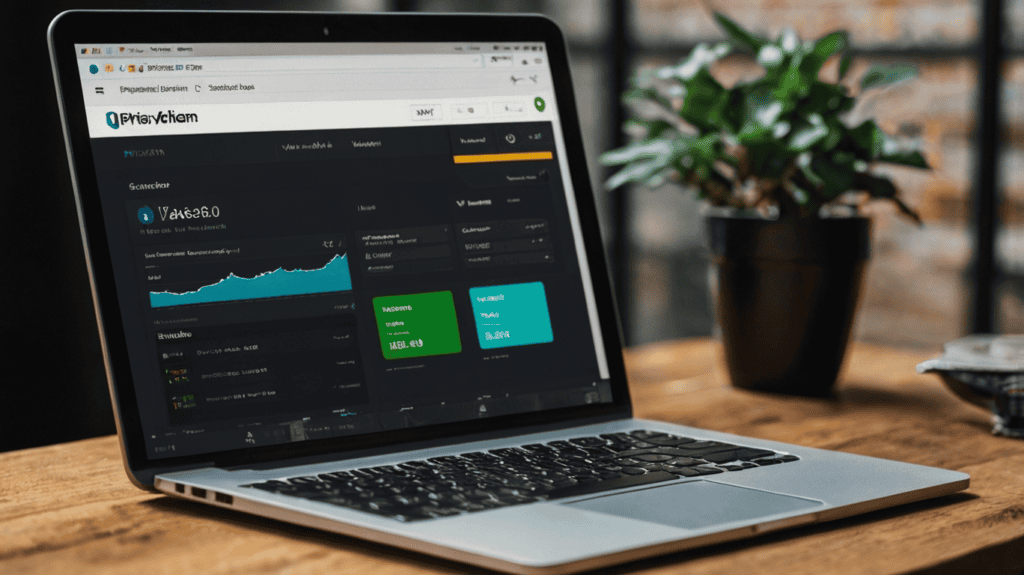
By Bethany Johnson June 26, 2025
In the ever-changing digital age of transactions, open-source payment software is a game changer. Unlike proprietary platforms, open-source solutions allow developers and businesses to access, modify, and customize the source code to fit specific needs. This degree of agility is bringing all new payment processors, startups and even established players seeking cost-effective and agile solutions.
Traditional ISOs (Independent Sales Organizations), long accustomed to reselling proprietary payment platforms, are now taking notice. ISOs are at a crossroads as merchants become increasingly tech-savvy and seek greater control.
So, here’s the central question: Is open-source payment software a disruptive threat that will undercut the ISO business model—or is it a golden opportunity to evolve, adapt, and stay ahead in the world of modern payment processors?
What Is Open-Source Payment Software?
Open-source payment software is simply payment processing software that is available to anyone to access, use, modify, and distribute the source code. Unlike closed or proprietary systems, developer-friendly tools offer full insights and control, making them attractive to developers, fintech startups, and forward-thinking businesses.

The key features of open-source payment software is that it’s transparent, and that users know exactly how the system works, the software is flexible, meaning it can be customized to fit your organization perfectly. Also, the deployment is low-cost as there are no expensive licensing fees to pay – only developers, who implement part or all of the software. It is a scalable and affordable option for businesses of all shapes and sizes.
With open-source payment software, startups can go to market faster, test on new functionality at a higher cadence, and and stay competitive in an industry driven by speed and innovation.
Key Advantages Over Proprietary Systems
Here are the key advantages of using open-source payment software:
- No costly licenses or vendor lock-in
- Complete source code access and control
- Rapid innovation with vibrant open-source communities
- Simplified integrations with APIs developers would love
The Role of Traditional ISOs in the Payment Ecosystem
Traditional Independent Sales Organizations (ISOs) are an important part of the payment system. They are a middle layer between the merchants and payment providers, handling merchant onboarding, processing the transactions and providing ongoing support to the customer. ISOs assist businesses with arranging card readers, payment gateways and compliance tools, and often bundle these services into a single product.

The majority of ISOs depend on these established, closed loop payment systems. These systems are confined and supportive, but they are not flexible and customizable. Their revenue model is typically derived from residuals on transactions, on one time setup fees for new merchants, and on hardware markups for POS devices and terminals.
This traditional model has served the industry well, but the rise of open-source payment software is starting to question that. With businesses now expecting more transparency, control, and cost-efficiency, ISOs face pressure to evolve.
Threats Open-Source Solutions Pose to Traditional ISOs
Traditional ISOs are facing a number of threats with the rise of open-source payment software. The trend toward transparency, customization and developer-friendly tools are changing the way merchants and startups partner with payment processors. Following are four types of risks ISOs have to manage. It is also important to stay alert on recent trends and innovations in the merchant services industry.
Disintermediation: Merchants Bypassing ISOs Entirely
With open-source software, ISOs Merchants can build and maintain their payment stacks in their own right without an ISO. Not only can tech-savvy businesses customize payment flows, reduce costs and remain in control by bypassing the ISOs by gaining direct access to software and APIs.

Pricing Pressure From Low-Cost, Open Alternatives
ISOs typically make money from startup fee, residuals, and hardware sales. Yet, open-source payment software drastically lowers the barrier to entry for fintech startups. These are lean, nimble players that can underprice traditional ISOs, providing cheaper, more flexible services that appeal to the types of merchants they want to attract today.
Commoditization of Core Payment Services
Once-basic capabilities such as transaction routing, payment gateway entry and fraud protection are now being commoditized. The open-source tools are fast evolving and enabling these services to be available with minimal costs. As a result, ISO’s find it more difficult to differentiate, and their margins start shrinking.
Developer-Driven Culture Eroding Legacy Relationships
Open-source ecosystems are based on transparency, velocity, and innovation, and these are developer values. This culture often skips the traditional sales-led, relationship-focused ISO models. Developers prefer APIs and instant deployment over waiting for a sales pitch or onboarding process, reducing the ISO’s perceived value.
Opportunities for ISOs in the Open-Source Era
While open-source payment software presents clear threats, it also opens up exciting new opportunities for traditional ISOs willing to adapt. By embracing innovation and repositioning their offerings, ISOs can not only stay relevant but also thrive in the evolving payments landscape. Here’s how they can capitalize on this shift.
Custom Payment Solutions as a Value-Added Service
Instead of relying on rigid, proprietary systems, ISOs can use open-source payment software to build tailor-made solutions for merchants. Whether it’s a unique checkout flow or a custom reporting dashboard, these personalized services add value and set ISOs apart in a crowded market.

Lower Operational Costs Through Open-Source Adoption
By moving away from expensive licensed platforms, ISOs can reduce their operational expenses. Open-source tools eliminate licensing fees and allow for in-house customization, letting ISOs control costs while offering more competitive pricing to their clients.
Integration and Compliance Services Built on Open Platforms
Merchants still need help with PCI compliance, data security, and integrating with third-party tools. ISOs can position themselves as expert service providers who simplify these tasks using flexible open-source infrastructure, making them essential partners rather than middlemen.
White-Label Offerings With Custom UIs
Open-source platforms allow full control over design and functionality. ISOs can create white-label payment portals with branded user interfaces, giving merchants a seamless and consistent experience that feels proprietary—without the cost of proprietary software.
Expansion Into Untapped Verticals
Healthcare, education, and hospitality often have complex or unique payment needs. ISOs can develop niche solutions on top of open-source payment software, enabling entry into specialized industries that demand flexibility, compliance, and deep customization.
Future Outlook: What’s Next for ISOs and Open Source?
The future of open-source payment software and ISOs isn’t “competing” against one another—it’s “converging” with one another. But as market dynamics change, we’re likely to enter a phase in which hybrid models dominate — where a proprietary backend is paired with an open-source frontend for greater flexibility and faster customization.

Forward-looking ISOs will become more tech-enabled, investing in their own development talent or partnering with agencies who work with open-source systems. The change will allow them to deliver more agile solutions while relying less upon expensive third-party vendors.
We can also foresee an emerging ecosystem where ISOs partner with open-source communities, contributing code, sponsoring specific features or developing integrations. This communication isn’t just about reputation-building, though — it also allows ISOs to get ahead of trends in payment technology.
To monetize their open-source adoption, ISOs can follow proven models—offering support services, paid training programs, and developing premium plugins or extensions for broader platforms. These add-ons create revenue without locking users into inflexible systems.
In this evolving landscape, ISOs who embrace open-source won’t just survive—they’ll lead.
Conclusion
Open-source payment software is not a disrupter, then; it’s a defining change in the building and delivery and evolution of payment services.” This is a strategic inflection point for traditional ISO.
Those who hold to outdated models may soon become irrelevant. But ISOs who are prepared to change, innovate, and develop with developers can reinvent their business. Adoption of transparency, flexibility, and community as the model for growth can also help ISOs to grow out of their markets, innovate with better service and fairer pricing, compete and remain competitive. The tools are already here, the only question is what you will do with them.
Frequently Asked Questions
1. What is open-source payment software?
Open-source payment software is a type of payment processing platform where the source code is publicly available. Anyone can use, modify, and customize it to fit specific business needs without paying licensing fees.
2. How does open-source software affect traditional ISOs?
It challenges the traditional ISO model by enabling merchants and fintech startups to bypass intermediaries. This reduces the need for third-party resellers and applies pressure on ISO pricing and service models.
3. Can ISOs benefit from open-source platforms?
Yes. ISOs can adopt open-source tools to lower their costs, offer custom integrations, and build white-label solutions. This allows them to expand into new verticals and add value in tech-driven ways.
4. Is open-source software secure for payment processing?
Security depends on implementation. Well-maintained open-source platforms with active communities and strong compliance support can be just as secure as proprietary systems—if properly configured and updated.
5. What are common ways to monetize open-source payment solutions?
Monetization models include offering premium plugins, paid support, compliance consulting, and training services. ISOs can also charge for custom development and system integration on top of open-source foundations.